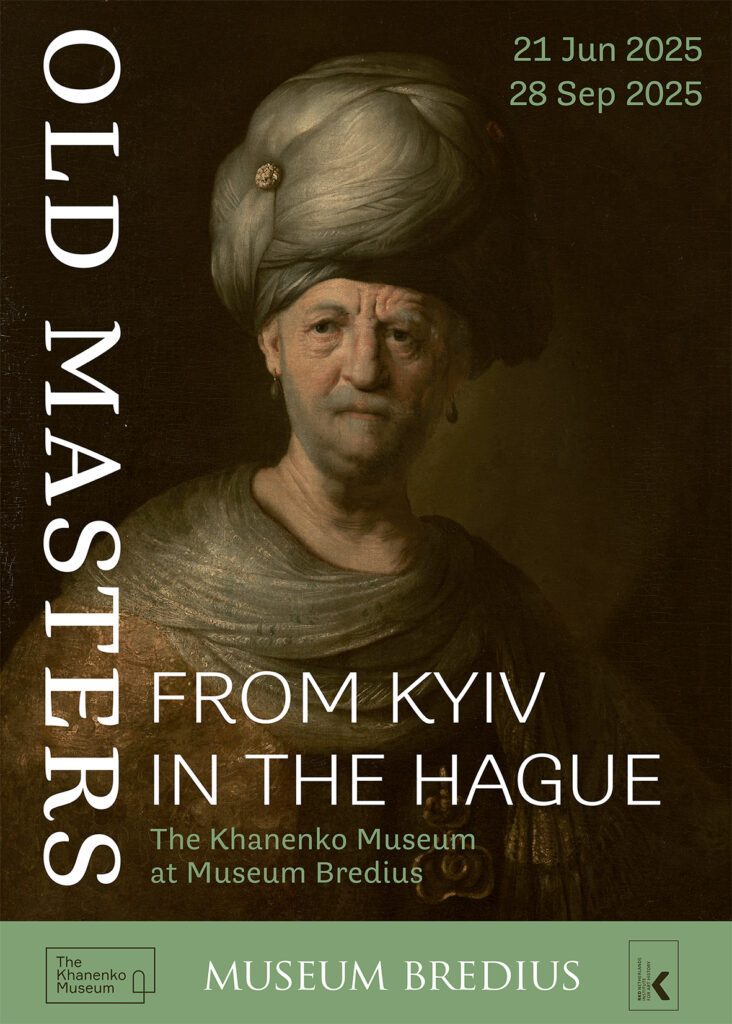The Khanenko Museum in Museum Bredius: Extended until 12 December!

Collaborations between the Dutch and Ukrainian art history scenes may still be growing, but are certainly not new. Just last year, archival research revealed that the respective founders of the Museum Bredius in The Hague and the Khanenko Museum in Kyiv not only met in 1897, but also advised and respected each other.
To celebrate this recently discovered Dutch-Ukrainian friendship from over 125 years ago, Museum Bredius is exhibiting 14 paintings from the Khanenko Museum matched with 12 stylistically similar works from Museum Bredius’ own collection.
The exhibition of 17th century Old Masters serves as a reunion of the two museum founders and as a tribute to their shared passion for fine art. Most importantly, however, it exemplifies how Dutch museums can show solidarity with Ukraine amid russia’s full-scale invasion.
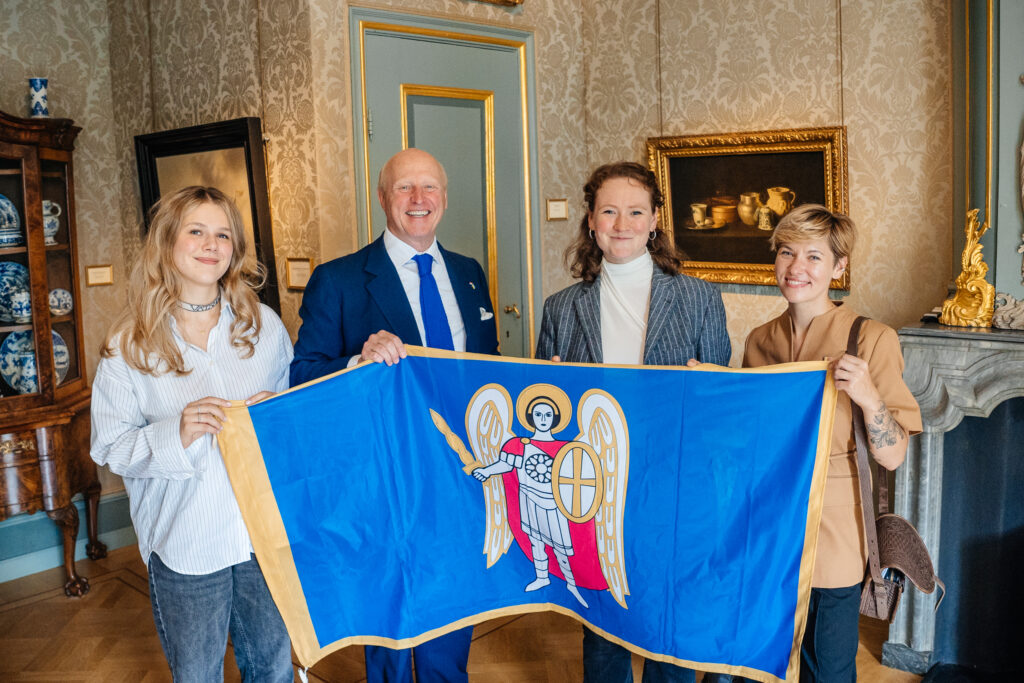
Dasha Lohvynova, Willem Jan Hoogsteder, Anni Schleicher & Uliana Bun with the flag of Kyiv.
“To me, the real message of this exhibition is that we have shared European culture for centuries. At the end of the 19th century, when Bredius was collecting European art, [the museum founders] Bohdan and Varvara Khanenko were collecting exactly the same paintings as they were in Paris and Berlin,” says Willem Jan Hoogsteder, director of Museum Bredius in an exclusive interview with VATAHA.
Dialogues across times
Carefully curated, the works echo each other through shared periods, styles, and motifs, ranging from parallel portraits to still lifes and landscapes. Spread across the museum’s floors, the paintings engage not only with their chosen pieces from Bredius’ collection but also with the architecture of the museum. The exhibition invites visitors to wander between various places, experiencing each painting both as an individual artwork and as part of a larger visual conversation.
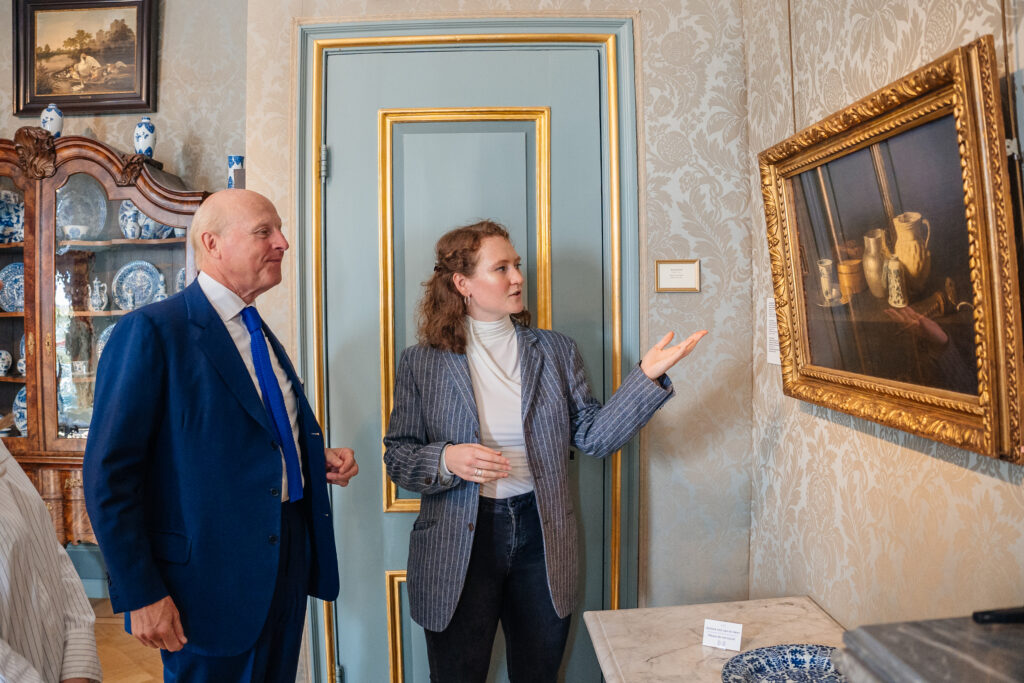
Hoogsteder and VATAHA’s Anni Schleicher view a still life by Juan de Zurbarán (1620-1649) from the Khanenko Museum
In his early 20th century memoir, Bohdan Khanenko captures the timeless spirit of the Old Masters’ artworks: “In those old paintings, the distant past comes to life before me, with its figures, pervaded with characteristic traits, feelings and thoughts.”
Reflecting on this, Hoogsteder notes that the paintings allow viewers not only to see history but to feel the spirit of lives once lived: “There are lots of archives and literature but you really do not know what it [the world] looked like until you see it in the paintings.” He continues, “You see people’s clothing, how they were, how they lived and worked. You see, especially in the Netherlands, how the nation was built because we were born in the 17th century, a very young country.”
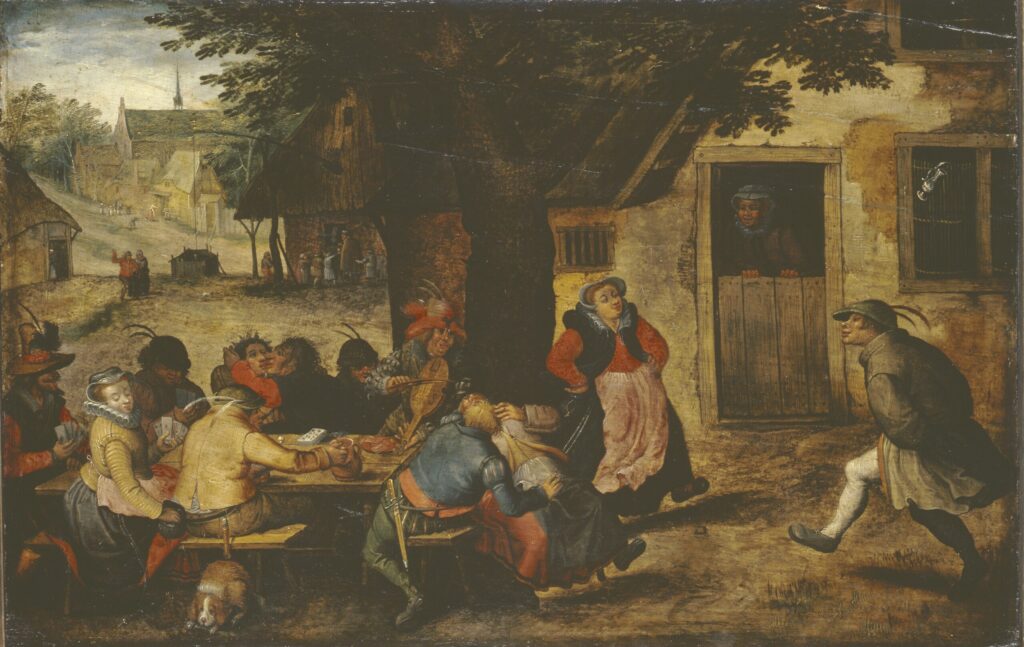
David Vinckboons I (1576-1632/33), Village Scene with Merrymaking Peasants and Soldiers, from the Khanenko Museum
Current situation in Kyiv
Open since June 21, the exhibition has already attracted considerable attention – three times as many visitors as usual. In the sturdy book of reviews, handwritten notes from around the world praise the exhibition and thank the museum for organising it. With 30,000 Ukrainians currently living in the Netherlands, many comments read дякую [ed. “thank you” in Ukrainian], while others say: “I felt like I was in Kyiv’s museum.”
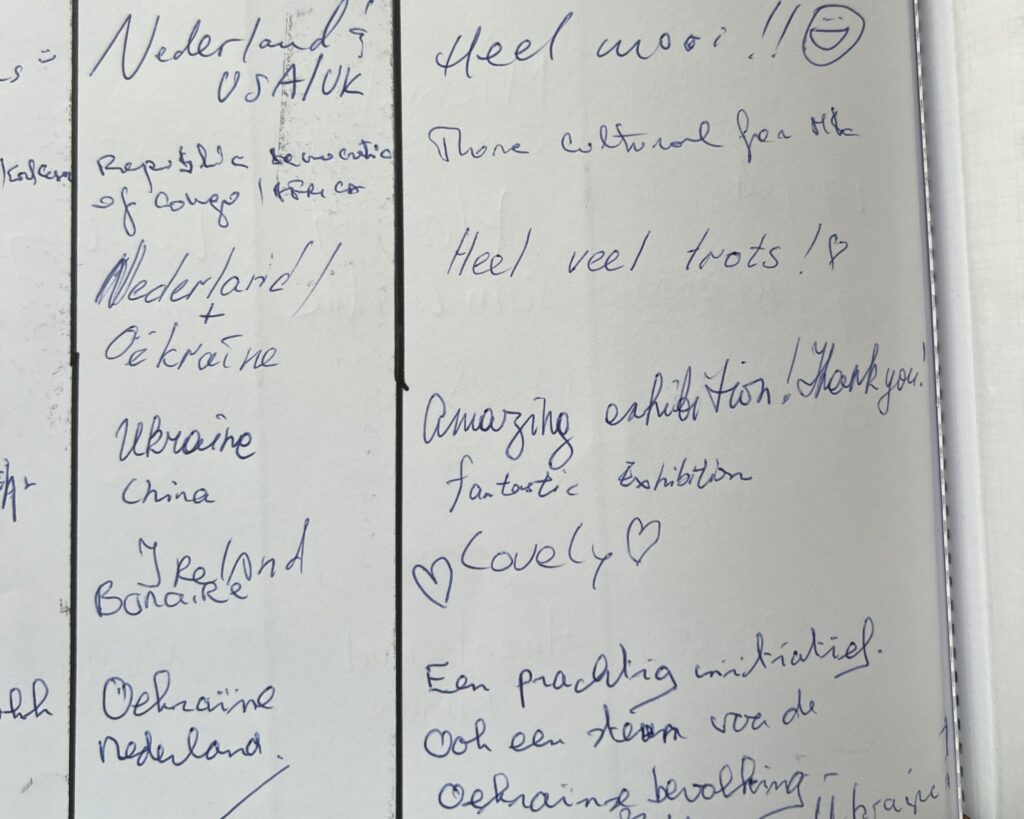

Grand staircase of the Khanenko Museum. Photo: M Andreyev, Khanenko Museum
Now that the works are safely exhibited in Museum Bredius, one cannot help but wonder what will happen to them once the show ends. In 2022, the Khanenko Museum was hit by a russian bomb, but miraculously the collection was not damaged and could be brought into safe storage. Hoogsteder reflects on the importance of responsibility of European countries to help safeguard such pieces: “I think it is not just responsibility, it is our duty to help.” Yet, this question of protection remains as urgent for the Dutch as it was for Ukrainians in 2022.
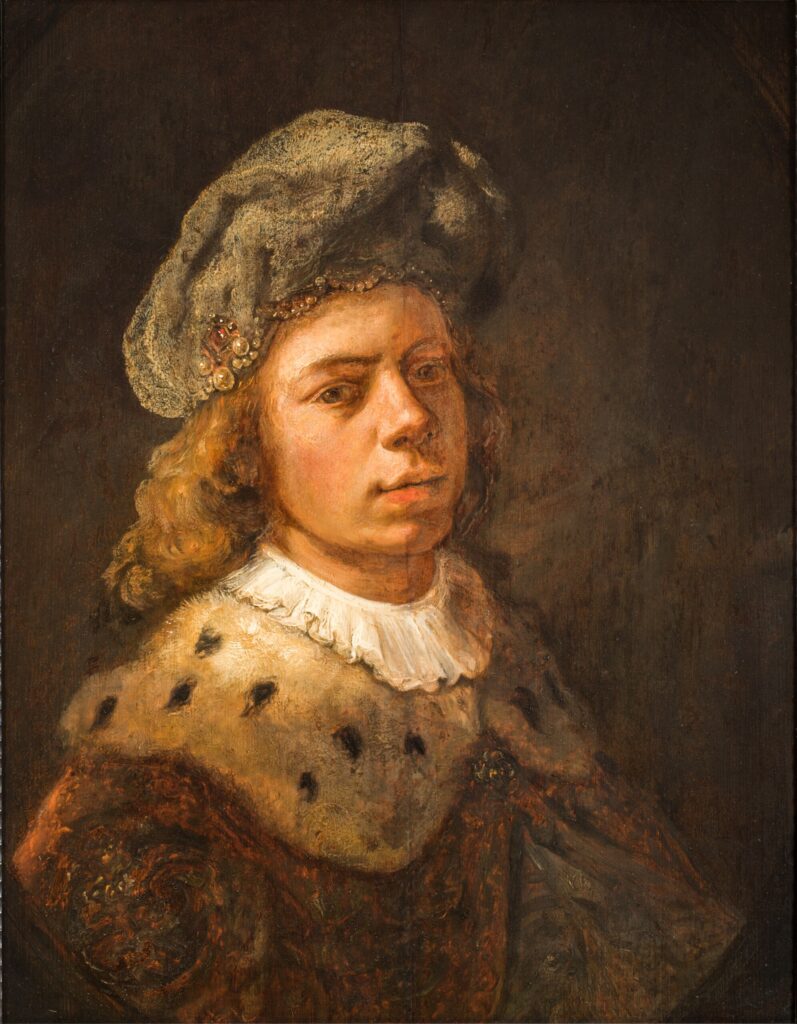
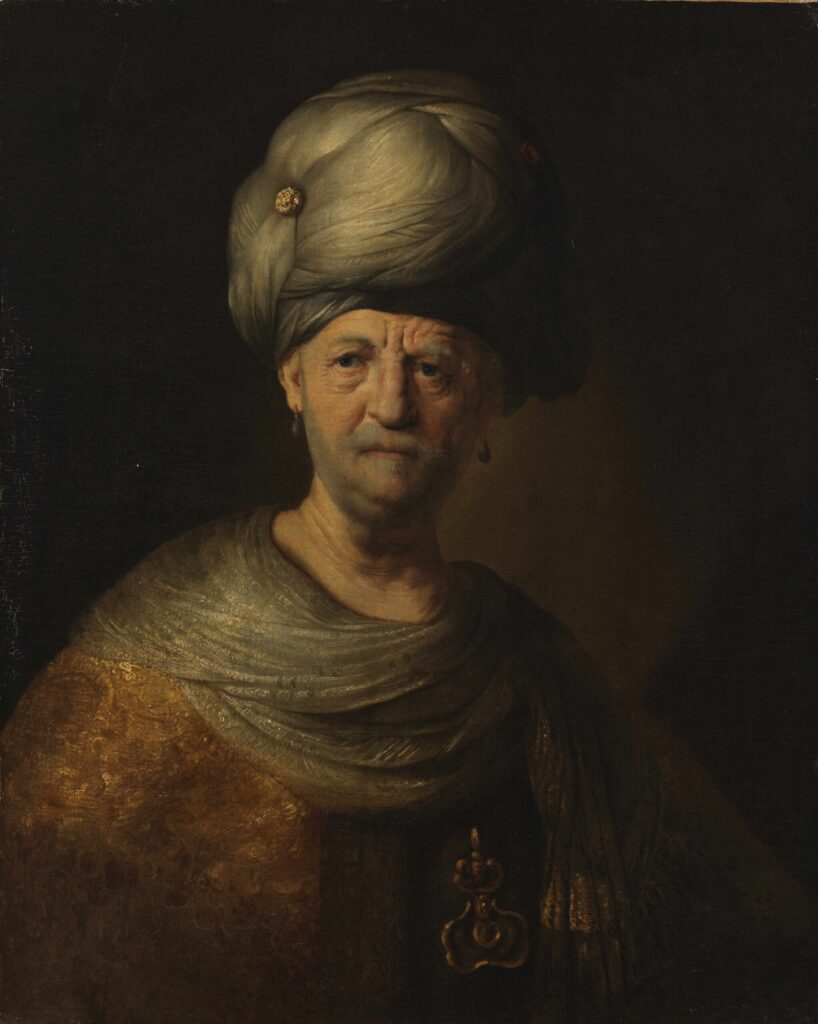
Left: Samuel van Hoogstraten (1627-1678), Self portrait in Fantasy Costume, from Museum Bredius. Right: Follower of Rembrandt van Rijn (1606-1669), Man in Oriental Dress, from the Khanenko Museum.
Despite these war crimes, Khanenko Museum remains open to the public, hosting educational programs and exhibitions throughout Europe. When Hoogsteder visited Kyiv in 2024 to bring his own private painting collections to the Khanenko Museum, he was taken aback by the public’s demand for culture, which reshaped his own sense of its value:
“[First Lady of Ukraine] Olena Zelenska phrased it well when she opened my exhibition and said: ‘If you take away a nation’s culture, the nation loses its soul.’ So, this exhibition in The Hague is completely different for Ukrainians than it is for us. It means so much more to them. Ukrainians teach us that we should not take culture for granted. It is a vital part of our lives.”
Appreciation for each other
Both museum founders Abraham Bredius and Bohdan Khanenko kept notebooks detailing their purchases, appraisals and provenance of their collections.
From this record keeping, research from the Netherlands Institute for Art History found Museum Bredius’s founder Abraham Bredius had not only traveled to Eastern Europe in 1897 on a quest for undiscovered Rembrandts, but met with Khanenko Museum founders Bohdan and his wife Varvara at their home.
The news came as a complete surprise to the Museum Bredius staff – and Hoogsteder personally: “We knew Bredius made a journey through Eastern Europe through the exhibition of Rembrandt, trying to find paintings. And we knew that Bredius was mentioned in the correspondence of Khanenkos. But we never knew that Bredius met them.”
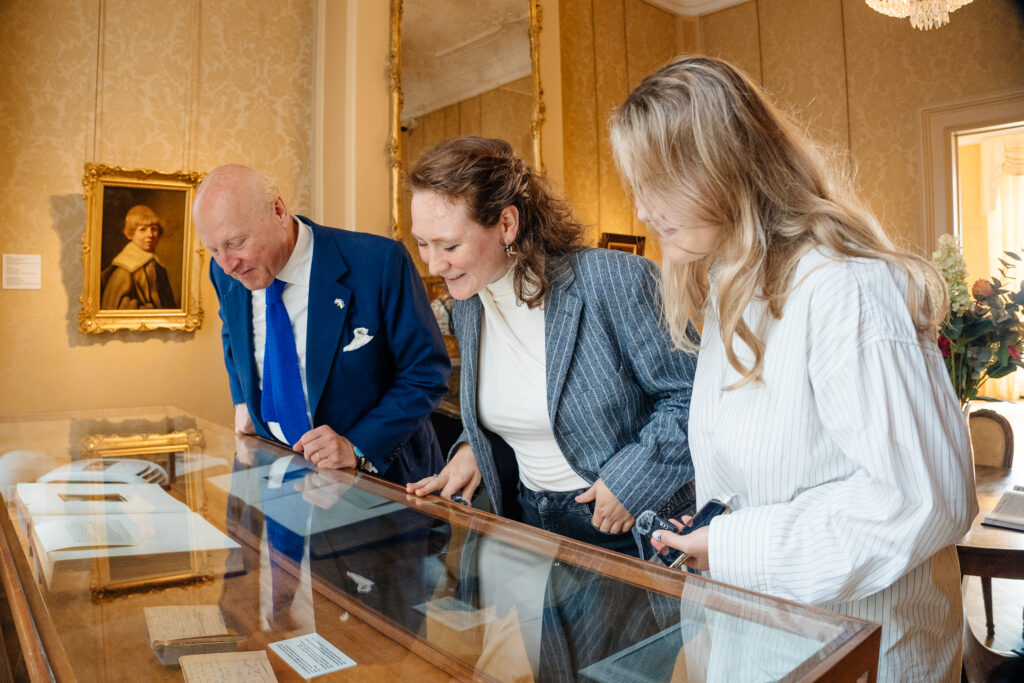
Hoogsteder, Schleicher and Lohvynova view Bredius’ travelogues.
In his travelogues, Bredius described artworks from the Khanenko couples’ private collection as “exquisite”, “exceptional” and “extremely important.” Confirming the connection, there are no less than 12 mentions of Abraham Bredius in Bohdan Khanenko’s notebook.
While he did not always agree with Bredius’s art opinions, he certainly respected him. Hoogsteder mentions with curiosity: “If you go to the Khanenko Museum, it is like coming home. It is like seeing your own artworks and it gives you a very comfortable feeling. It makes you aware that it is a shared history.”

What began as a rediscovery of a 19th century connection has grown into an act of solidarity, celebrating a shared European cultural heritage. By presenting these works today, Museum Bredius continues the dialogue that once united its founder and the Khanenkos, reminding us that culture connects and endures, and, in Hoogsteder’s words, that “we all belong together.”
The Old Masters from Kyiv in The Hague exhibition is on display until 28 September at Museum Bredius, Lange Vijverberg 14 2513 AC The Hague. The catalogue – in Ukrainian, Dutch and English – is free.
Entrance costs 8,50€, and free admissions for all Ukrainians and for anyone with Museumkaart, Rembrandtpass, ICOM Pass, or under the age of 18.
VATAHA Recommends features events and exhibitions unaffiliated with VATAHA but aligned with our mission to promote Ukrainian arts and culture in the Netherlands.
This recommendation was suggested by Uliana Bun. Check out all VATAHA Recommends here.
